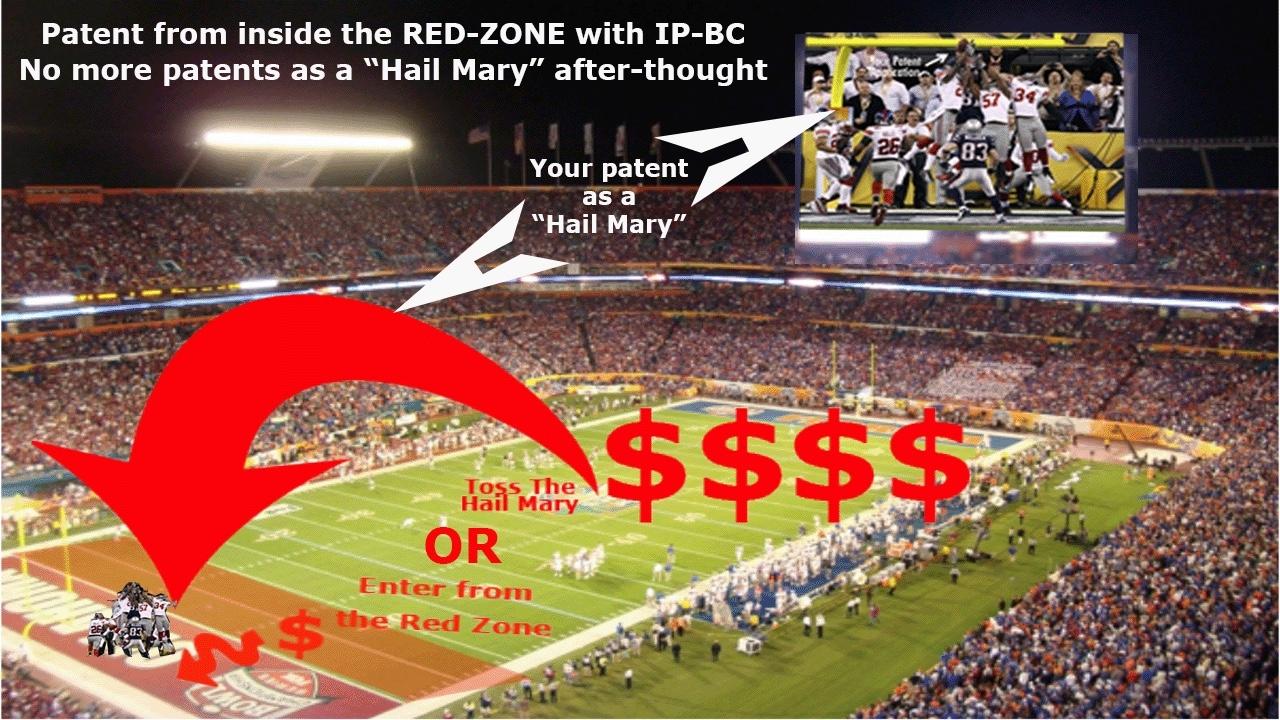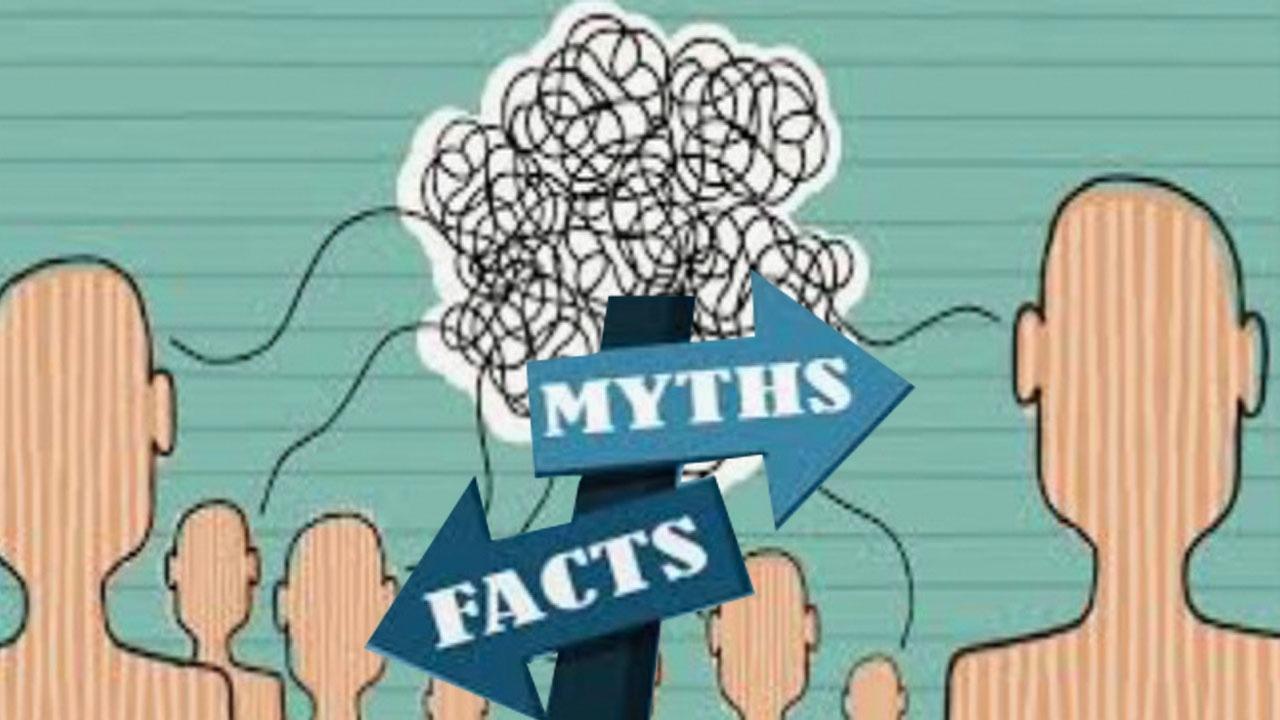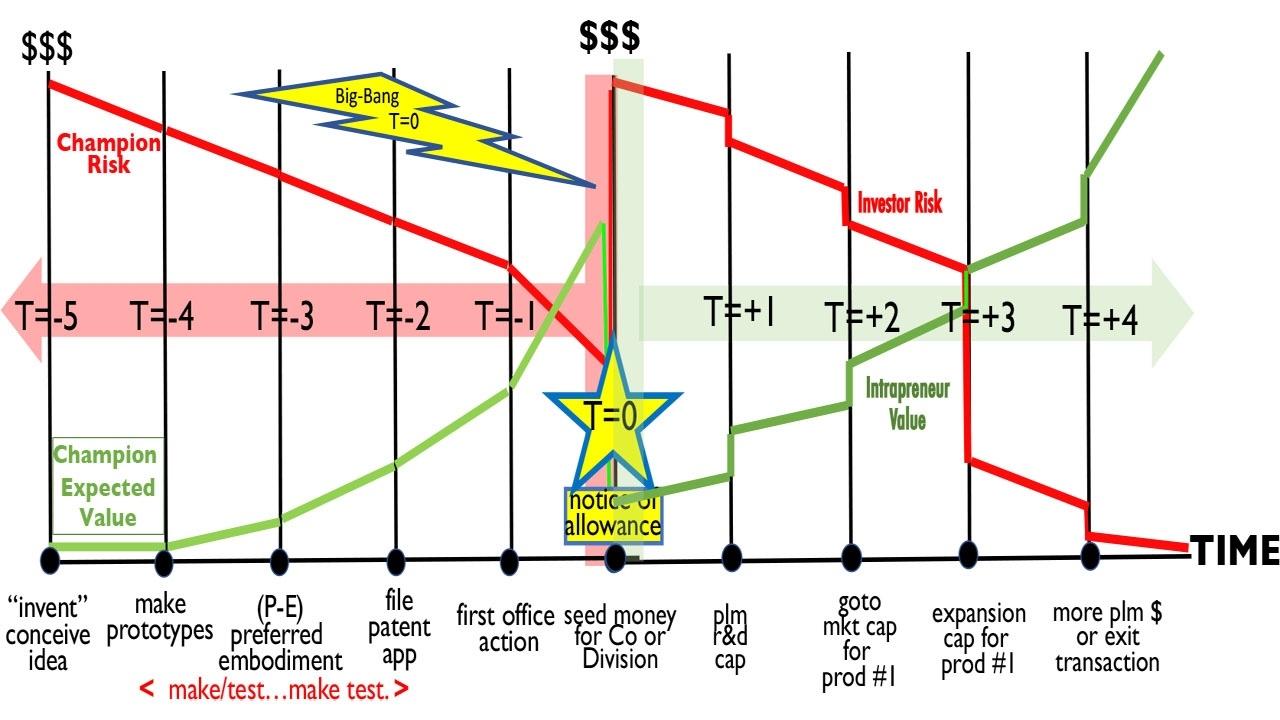IP SAVVYS Blog - select posts by role/title or by category
Align your patent goals and objectives for a "kind awakening"

Attention-now hear this...align your patenting goals for a Kind Awakening:
Everyone wanted patents to issue quickly and cleanly. CEO's expected them to offer sustainable differentiation, Finance wanted predictable budget spends, Innovators were challenged to create and pick the right Preferred-Embodiment (P-E), R&D/Engineering was expected to perfect the P-E at the lowest cost, Patent Counsel was tasked to get monopoly claims, Product Marketing had to understand the competitive landscape, and BusDev/Sales was charged with selling the "differentiated must haves". Conflicting objectives? Not really...not when everyone is in the IP Zone together.
TSM Boost Utility Patenting for a Kind Awakening
Whether you are an innovator, patent counsel, or one of the team in-between, the IP SAVVYS book and IP-BC course are designed to close the skills gap and accelerate you down the patent learning curve, no matter your level of patenting experience.
When you close the skills gap, and everyone unde...
Myths and Truths...Risks when seeking a utility patent: "A Rude vs A Kind Awakening"

You can get the claims you seek by embracing the IP SAVVYS approach
The risk of a “Rude vs Kind Awakening”
Myths or facts? Things everyone agreed on & the truth about fatal office action rejections
(1) Everyone agreed it was essential to get patents with Sustainable Competitive Advantage (SCA).
SCA patents have true asset value because they are de-risked from FATAL Rejections BEFORE filing, publishing with clean File Wrappers.
(2) At the same time, everyone's IP conversation was a little different. Patent hunters had different skills levels and often times conflicting beliefs & patenting goals.
(3) More devastating, patent hunters were ill prepared for the "rude awakening" of FOARs during prosecution, with critical risks of abandonment after substantive patent spends.
The key to a kind awakening is to have a fool proof patent drafting method that avoids FOARS before filing with The Schwartz Method.
The primary reason patents get filed without being de-risked for FOARs

We've covered the race track metaphor as a way to explain the nature of FOARs which can occur with even bonafide patent applications filed with the greatest of intent. But how can this happen with a team of dedicated IP professionals? And why do we use the "Hail Mary" metaphor to describe what this type of IP workflow looks like?
A patent application that is drafted and filed under time pressure, due to internal deadlines or 1 year rule restrictions has the greatest risk of carrying potentially Fatal Office Action Rejections (FOARs) in it's DNA. There are many reasons why this pressured delivery is part of the process and none of them are good reasons or excuses for allowing this to happen. If patent drafting is not part of the product development roadmap, then you and your team is susceptible to this ill fated situation. It is important to understand the symptoms of this in your IP workflow and to Use TSM and BBT to rework your IP sequence of events so that the patent application is ...
Myth #1-Common Misconceptions about IP Capitalization

Is it possible that people so smart they are seeking Intellectual Property protection, could have even the inkling of a misconception about getting the right kind of protection?
Of course it is...because it's complicated. This is the perfect use case for "what's easy is hard, and what's hard can be easier". It's easy to say we're getting Ip protection but we know that is very challenging at the least. So if it's really hard, it can be easier with 20/20 hindsight and 80 more IP-IQ points...if you have some clarifications and guidance from a trustworthy source.
Welcome to this category and the posts here will seek to identify what you know and don't know, and what you don't know you don't know.
Slippery Slope or NOT?: IP Complexity, Competence, and Execution

The rules for getting utility patents are complex and the execution of patent preparation, filing, prosecution, and use rights is a daunting task-akin to walking a slippery slope. Why? When you get into this game, can you act as a "player-coach" and both lead and show by example what and how to do it? It all begins with “changing the IP conversation “ by “knowing how the legal systems rules" (Manual for Patent Application Procedures-MPEP) work.
At the outset it is a slippery slope with this part of the execution plan...i.e. you have something you want to protect and there is an execution sequence to achieve it, within the legal framework, along with patent lawyers who run the rule book in real time.
We believe strongly that every IP-Champion, be it the CEO or one of the senior executives in product development, can and should be a “referee/player coach” in the game . . . knowing not only the rules but also the "stories" about how they play out, so s/he can both lead and show.
...Schwartz's Big Bang Theory (BBT) of IP Capitalization : Unifying concept of IP-BC

The BBT takes apart the sequence of events from conception to market exit, assigns time stamps to critical events, and identifies T=O as the instance when the "universe comes into being"...the notice of allowance. This simplification, allows Schwartz to take a look "backwards in time" from T=0 and disect the risk components related to achieving Sustainable Competitive Advantage (SCA) patent applications. As you will see, the greatest risk is from T=-4 to T=-2.
Often what's hard can be easy, and sometimes what should be easy is actually very hard. The single most important catalyst in making hard things easier is a problem solving angle, often called a Point of View (POV). If the right POV is used, then a problem can be dissolved or broken down into solvable components, that in line of a sensible sequence of events, results in "problem solved".
With IP, one of the more complex domains to secure patents with SCA ( Sustainable Competitive Advantage), I have adopted a unifying POV called...
Creative Innovation and IP Discipline

If we can agree that emerging from the Flash Of Genius (i.e. emerging from the FOG) is a wonderful moment to experience, it is equally fraught with the intrepid sense of hurdles ahead in establishing Intellectual Property Rights.
Having the 20-20 hindsight , the opportunity to view that moment in the FOG from the mountain top of success, to see a path to achieving a sustainable IP value proposition, could prove to be the catalyst for all of the players in the IP hunt.
Establishing an IP position may be the furthest thought in the mind of the seminal creator. On the other hand, it might be the first thought, as in "who do I need to involve now to ensure our rights to develop and commercialize this are engaged"...or anywhere in between.
The issue is well cast in the contrast between the FOGGY act of creating the innovative and patentable "thing", and the process of establishing intellectual property rights for it. One is intuitive and the other is disciplined, as in a path on a cri...
Original Misconceptions: 1. Picket Fence

Right off, when you create a "Picket Fence" you can expand your monopoly. OK, sure that's the ticket. Getting the picket fence, well that's where the misconceptions can creep in.
If you think you can do it in one master stroke, with a bible patent that covers all the Preferred Embodiments of your invention, it may prove to be a walk into the tulip patches.
First, if your application has MORE THAN ONE INVENTION in it, and your preferred embodiment passes all the rules for allowance, then at the time of publishing, they are going to MAKE you pick an invention. A patent can only cover one invention. So if the set of P-E's can be seen as different inventions (per your CLAIM sets), then you will have to divide at the time of publishing in order to keep "the others".
If you go this route, then the "20 year" time clock starts clicking on all the embodiments, and they will all be shown as well. Further, if there is any reason that the first patent "falls", the risk of the rest falling is hi...
Do I wait to GOTO market until my patent Issues?

BBT shares a set of events that lock-step toward the blessed Notice of Allowance for a patent on one of your chosen inventions. It is the primary theme of IP-BC and is used to establish all the course lessons and tools you can put to best practice use.
The sequence of events you will engage in to file an airtight patent application, de-risked from FOARs will take a natural course IF YOU STAY FOCUSED on identifying and prototyping the P-E, along with drafting layman claims for the object of enablement that quiesces to BEST MODE with the minimum number of "elements".
So while that's going on in R&D and Product Marketing, on the other side of T=0 (MARKET ENTRY), Business Development/Sales is making moves to establish the commercial value of what you have been in the process of protecting.
MISCONCEPTION: we must wait till the patent issues before selling it in the marketplace.
In this first-to-file world, and with the acceleration of innovation, the iterative nature of patenting and s...

